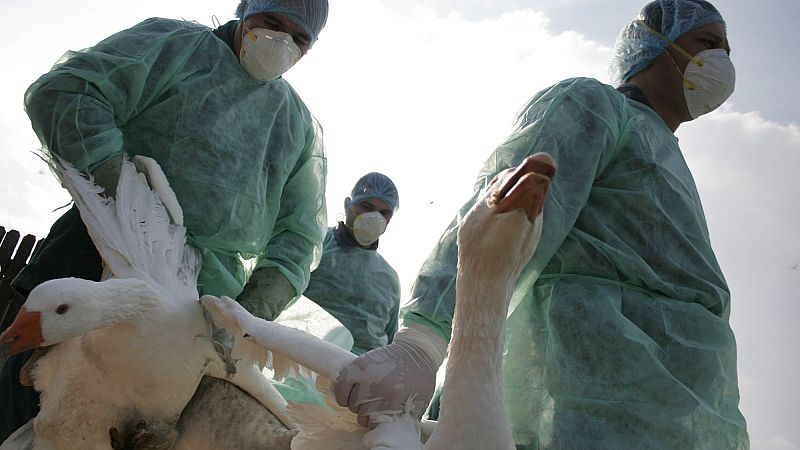
Bird flu instances affecting mammals doubled in 2024 compared to the previous year - up to 1,022 outbreaks compared to 459 - and are having greater impacts, according to a new report on the global state of animal health by the World Organisation for Animal Health (WOAH).
During the same period, 943 outbreaks were reported in poultry, alongside 2,570 outbreaks in non-poultry species, including 1,548 among wild birds. These incidents led to the loss of over 82.1 million poultry.
Over the past two decades, more than 633 million birds have been lost either through infection or culling as part of efforts to contain the virus.
“A notable development in 2024 was the increase in HPAI outbreaks in mammals,” the report notes. It also highlights that avian influenza is no longer a seasonal or regional issue, as cases have been reported globally since 2022. The virus has affected new species of wild birds, domestic poultry, and an increasing number of mammal species, including livestock and pets.
WOAH warns that avian influenza has evolved beyond an animal health crisis into a global emergency, threatening agriculture, food security, trade, and ecosystems.
Risk for human health
In some cases, the virus has spilled over into humans, raising concerns about its potential to develop into a broader public health crisis.
The situation is particularly worrying in the United States, where a bird flu outbreak among poultry and dairy cattle has led to 67 confirmed human cases and one death.
In Europe, there have been no human infections and no reports of the virus in cattle. The genotype currently circulating in the US has not been detected in Europe, according to the European Centre for Disease Prevention and Control (ECDC).
While the risk of human infection remains low, the WOAH warns that as more mammalian species become infected, the likelihood of the virus adapting to enable mammal-to-mammal and potentially human transmission increases.
Broad consequences not only for birds
In addition to the devastating impact on poultry, bird flu is causing unprecedented mass die-offs in wild bird populations, disrupting ecosystems and threatening biodiversity, the report shows.
“As integral components of ecosystem stability, the loss of biodiversity causes cascading effects that compromise environmental resilience and global wildlife conservation,” it reads, adding that biodiversity alteration at this scale also affects migration patterns and food chains.
According to the animal health organisation, seabirds, raptors and waterfowl have suffered catastrophic losses, with entire breeding colonies wiped out.
Further consequences of the global spread of avian flu include disruption to international trade, as outbreaks often trigger strict commercial restrictions.
One example is the current suspension of Brazil’s poultry exports to the European Union after the country notified the WOAH of a bird flu outbreak.
As of 19 May, the country lost its status of ‘free of Highly Pathogenic Avian Influenza (HPAI)’ which means Brazilian authorities are unable to sign the animal health certificates required for exports to the EU.
Are vaccines the solution?
The WOAH’s report states that “the scale and complexity of this ongoing epizootic require urgent action beyond traditional control measures”.
What are these traditional measures? Strict biosecurity and active surveillance have been the main strategies to date. While these have been effective to some extent, the organisation warns that the virus’s relentless spread demands additional efforts.
Vaccination may offer a solution or at least serve as a valuable complement to traditional measures, as vaccines can reduce not only the spread of outbreaks but also the severity of infections.
In October 2023, France became the first EU country to roll out a nationwide vaccination campaign against bird flu in ducks, due to their key role in disease transmission.
According to the report, this initiative helped reduce the number of outbreaks from a projected 700 to just 10.
In addition to animal vaccines, some countries have started vaccination among people at risk of contracting bird flu, such as poultry farm workers.
Last year, the European Commission, purchased 665,000 pre-pandemic vaccine doses targeting avian influenza and took an option for 40 million doses over the next four years, in preparation for a potential future spread to humans.
Finland was the first country to receive the shipment after reporting becoming the first country in the world to start vaccinating humans.







